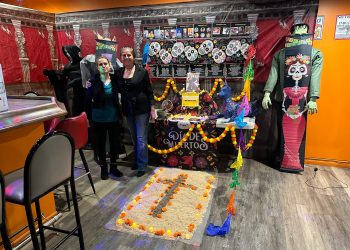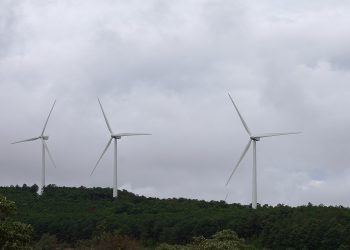People who live along the Hammond River near Saint John are dismayed that their opposition to a proposed gypsum quarry owned by J.D. Irving Ltd. has made them targets of RCMP surveillance.
Sarah Blenis created the Facebook group, Protect Upham Mountain, in June 2018, after witnessing industrial activity in her area. She later learned that the activity was related to the proposed gypsum quarry and that the quarry’s environmental impact assessment was “sub-par.”
The proposed Upham quarry, owned by Hammond Rivers Holdings, a J.D. Irving company, is located on unceded Mi’kmaq land that is part of the Elsipogtog Aboriginal Title Claim currently before the courts.
According to Blenis, her Facebook page and the group’s activities have been subjected to surveillance from the Moncton RCMP Special Projects Division.

As documented in the recent book, Policing Indigenous Movements, by Andrew Crosby and Jeffrey Monaghan, the RCMP is monitoring environmental groups and Indigenous land defenders and communities across the country.
According to Monaghan, “the police are monitoring and aggregating data from social media that can be used for specific interventions such as crowd control and criminalization of dissent.”
“A very opaque police bureaucracy has expanded over the past few decades and the ‘extremists’ or targets of national security are those opposing resource extraction such as those participating in protests against pipelines, mines, fracking and hydro projects. These protests are being interpreted as threats to national security and infrastructure,” says Monaghan.
Blenis said the Project Mountain Upham group has: “drawn attention to how the project’s environmental assessment stated there are no regulated wetlands in the project site; indeed there is, and a full assessment of surrounding wetlands has not been completed.” She asks: “We are not happy with this, but does that warrant RCMP monitoring?”
“Constable Jesse Lynburner has attended both community meetings without signing in, and has called me personally once a month for the past five months, to gauge whether we are planning to protest,” says Blenis.
“I told Constable Lynburner that we have the right to freedom of speech, and the right to peacefully protest. To date, all we have done is two community meetings, signed petitions, and wrote letters of appeal to various levels of government and Ministers. These actions warrant police supervision?” questions Blenis.
Tia Dafnos, a sociologist at the University of New Brunswick, studies changes in the policing of activism in Canada. She agrees with Monaghan that “this emergent ‘national security’ bureaucracy concerned with critical infrastructure is driven by a demand for information and intelligence as a means to preempt or mitigate the impact of protests or other direct actions.”
“The ‘outreach’ by the RCMP is consistent with ‘negotiated management’ or ‘measured response’ approaches. This approach tends to be framed as the police acting as a liaison and proactively opening up channels for communication — sometimes offering to ‘help’ activists to exercise their right to peaceful protest,” says Dafnos.
“However this liaison work is really a means of information gathering, with that information being shared within the force and with their partners, which increasingly includes industry. It is also a way that police can impose constraints on whether and how activists carry out actions, criminalizing those who don’t willingly engage with this ‘negotiation’,” Dafnos explains.
Thirty-five of the 89 Indigenous activists profiled by the RCMP as potential threats to public safety in an operation called Project Sitka had participated in the 2013 anti-shale gas movement in New Brunswick. The same constable seen at the Upham community meetings has also been attending anti-fracking meetings in Albert County.
“We, environmental groups, rural communities and First Nations communities, are not the threat. Officials who approve these projects without adhering to social and environmental standards and setback limits are the real threat to our province’s wellbeing. Not us,” says Blenis.
Tracy Glynn writes for the NB Media Co-op and is a doctoral researcher with RAVEN – Rural Action and Voices for the Environment.










